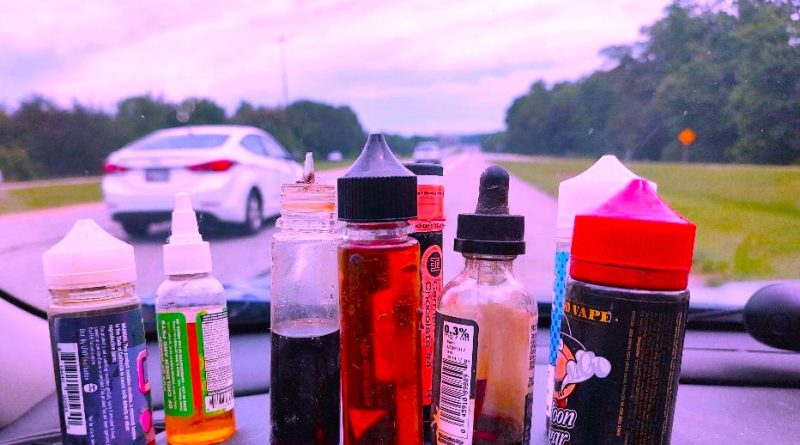Rideshare Experiences: Weed, Vape, Bongs and Near-Death Experiences
“What’s The Big Deal?”
“The window’s open. What’s the big deal?”
I was asked this question on a recent ride as a response when someone was smoking weed after I asked the rider if I was smelling weed odor.
This wasn’t the first time I heard this question from a rider as a response from the backseat of my car.
Over the years, people who vape, smoke cigarettes, weed, and other products during the drive, have tried to appeal to my logic.
So, what’s the big deal?
Their logic.
The smoke and the smell will dissipate and leave the vehicle if the windows are open during the drive, even if it’s 22 degrees Fahrenheit outside.
In the past, I’ve tried to refer to the rideshare community policies about not smoking or using drugs in the vehicle for both drivers and riders. Half the time, this approach has worked. For the other half, the riders grudgingly cease their smoking and vaping, with an air of resentment and disappointment.
A potential setup for a poor driver rating.
For example, the rider’s complaint could be “The driver had a bad attitude,” or something to that effect.
I try to appeal to the rider’s better nature when I want them to discontinue their ingestion.
I share several stories with them about riders who got in the car after someone either reeked of weed or smoked on the ride before them. They smelled the odor in the vehicle and registered a complaint with the rideshare company. In several of these complaints, I lost my ability to drive for several days until the complaint was addressed and I was again cleared to drive.
In effect, I countered their logic with my logic.
I typically appeal to their respectful nature. It tends to work very well. I believe most people don’t want to cause a driver to lose their ability to work.
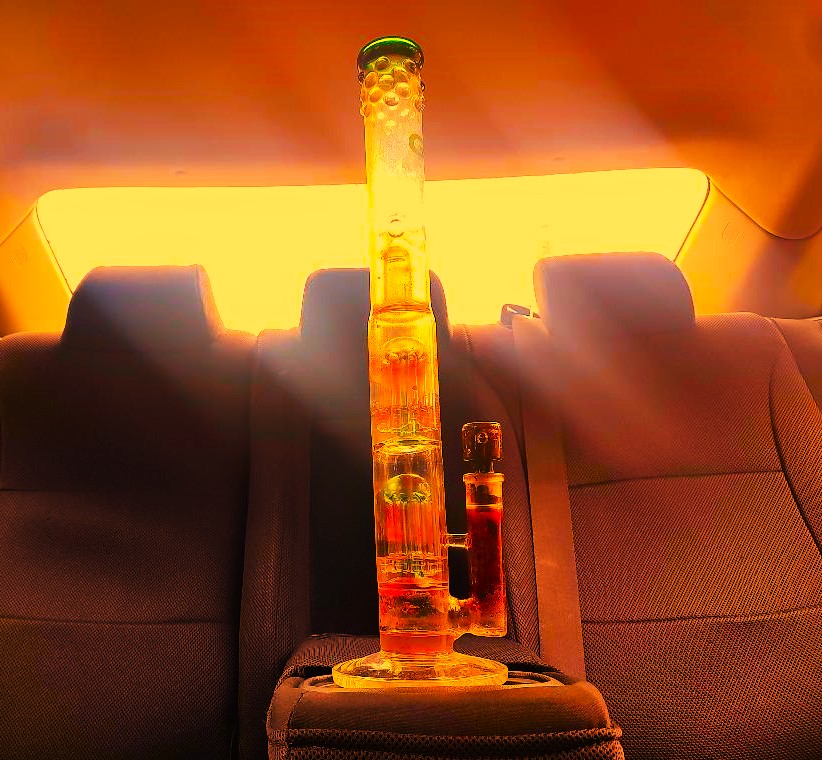
Bongs, Containers of Drugs, Vape Products
It’s relatively common for people to leave items in the car after a rideshare.
In most cases, the driver or rider reports the lost item on the rideshare App, and then a connection is made with the parties to determine how to return the item to the owner.
Most lost items are cell phones, glasses, umbrellas, credit cards, clothing accessories, prescription drugs, and wallets.
These lost items are returned within a few days.
Other items are generally not claimed.
These would include drug paraphernalia, such as pipes and bongs. As well as vaping products, and bags or containers of drugs.
However, I did have several riders who reached out to me to return such items.
“Hey man, I think I left a bottle of my meds in the backseat of your car earlier today. Can I get it back?”
The phone call started the process of ensuring the bottle was returned.
Sure enough, I found the bottle of weed which had rolled under the backseat passenger side of the car.
We arranged to meet, and he was very grateful to get his lost item.
In another situation, I returned a bong.
It was a memorable rideshare and the bong was a new purchase.
I drove the rider and a friend to a shop in the city that sells paraphernalia. They got out, and several minutes later entered the car very excited.
“Check out this technology. It’s crazy!”
I looked back into the rear before we hit the road.
He took his new prized possession out of the bag to show and explain how the bong worked.
“There are several water-cooled sections and the smoke you inhale is smooth as butter, “The rider exclaimed loudly. “There’s even a little spinner that causes the smoke to look like a tornado. How cool!”
During the remainder of the ride, they both took turns telling me about the wonders of their new bong. They were both eager to arrive at their destination and try out their amazing technologically efficient paraphernalia.
We arrived at their ultimate destination, and they departed the vehicle.
Minus their bong.
It was my last ride, so I closed out my App and headed home.
Within a very short time, I received a call.
“I’m so sorry man, but we left the bong in your car. Remember us? When can you bring it to us? We’re sorry for the big hassle. I’ll tip you.”
I like the word tip, so I turned the car around.
They got back their needed tool and I got my tip.
Another satisfied customer, another story, and another wrap on another day.

“Wake up! Hey, Wake Up!”
In the rideshare world, it’s relatively common to be used as a means of transport in what appears to be drug dealing.
For example, I often pick up people at a local metro station, drive them to an apartment building, a parking lot, or a gas station, and they run inside. They emerge several minutes later, sometimes with a full backpack, or minus a full backpack.
In most cases, they return to the metro station.
In other similar situations, the person returns to the car after their first stop smelling like weed or some other chemical.
There is often a clear change in behavior as well. Sometimes the person who was chatty after the initial pick-up returns to the car more “chill.” Or vice-versa, initially quiet and super conversive after their stop.
On one such ride, I had an extremely concerning experience.
I picked up a person who arranged a round-trip ride.
The first half of the ride was enjoyable. The young person had a good sense of humor, and we had a great conversation.
When we arrived at the first stop, in the warehouse district, the rider left my vehicle.
Within five minutes, the person returned, and we drove back to the original pick-up location.
No conversation.
I asked, “How’s it going back there?”
The rider mumbled something.
I increased the volume of my voice, “Hey man, are you okay?”
No response.
I looked back in my rearview mirror. Head down and chin on the chest.
I pulled the car over and walked around the car to the passenger’s door.
I opened the door. The person was out cold.
I yelled into the back seat, “Wake up! Hey, wake up!”
No response.
I then went to my front seat and grabbed my compressed air signal horn.
I pointed the horn towards the unconscious rider.
“WAAAAAAHHHHHHH!!!!!”
The horn blast could be heard for blocks.
“What, huh, what, what???”
Semi-conscious and I breathed a sigh of relief.
“Hey dude, I was concerned about you. You were unresponsive.”
“I’m okay. Do I need to get out? I’m okay. I’m okay.”
I said, “We’re only two minutes from your destination.”
“Okay, okay, Cool.”
I completed the trip, and the person crawled out of my car and headed down the street.
That afternoon I purchased a two-dose spray box of Narcan.
It resides in my glove department next to my face mask supply.
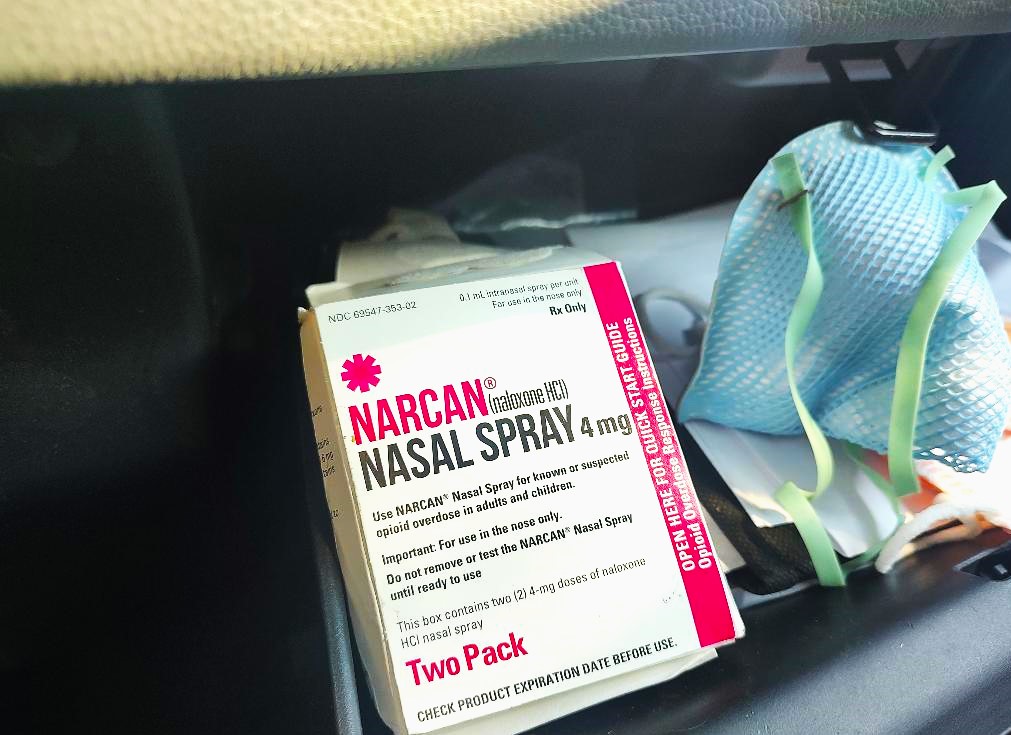
***********
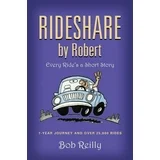 My “Rideshare by Robert” blog continues with new stories based on my published book, “Rideshare by Robert: Every Ride’s a Short Story.” The book, and the blog, are short stories about actual rides, observations, revelations, and reflections on the rideshare experience. I hope you will find the writings informational with humor and compassion for the human family.
My “Rideshare by Robert” blog continues with new stories based on my published book, “Rideshare by Robert: Every Ride’s a Short Story.” The book, and the blog, are short stories about actual rides, observations, revelations, and reflections on the rideshare experience. I hope you will find the writings informational with humor and compassion for the human family.
So, climb in, buckle up, and enjoy the ride.
Welcome to “Rideshare by Robert.”
A place where anything can happen and usually does.
Disclaimer
I have tried to provide anonymity to all individuals portrayed in my writings while maintaining the integrity of the story. The names have been changed to protect the innocent. And, in some cases, the not-so-innocent. I have substituted the characteristics of individuals in my writings to further my attempt to maintain anonymity. Conversations and other details are based on my best recollection and notes. Although I have spent time driving with many celebrities and public figures over the years, I have intentionally omitted their names, and their rides, in my writings. Actual locales, along with other details such as when and where the rides occurred, have been modified to maintain my objective of rider privacy and anonymity.
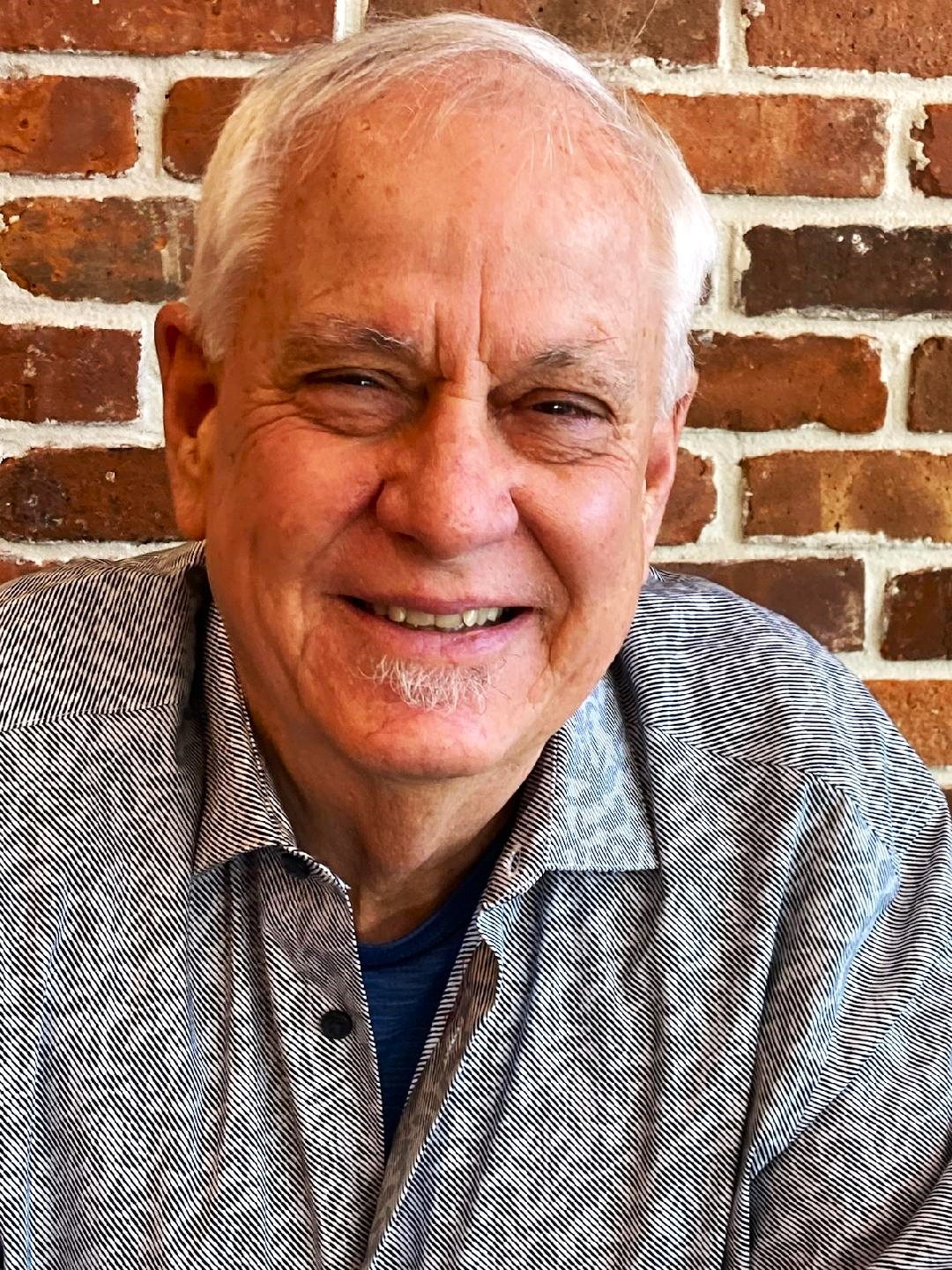
After a 35-year career in the Global Supply Chain Logistics industry, Maryland native Bob Reilly, is enjoying his second career as an author, freelancer, and singer-songwriter. His first published book, “Rideshare by Robert,” is a collection of journalistic short-story essays covering a 7-year, 25,000-ride life journey. The book is available everywhere online with signed copies available directly through Bob or at his ongoing “Meet the Author” events. You can also explore his last four studio albums and singles on all your popular music streaming platforms. Albums and singles include, “Work in Progress,” Unexpected Ways,” Perfect Love,” “The Journey Home,” and “I Thank God for You,” a song written and recorded in 2022 for his daughter’s wedding.He is the band leader and promoter for The Reilly Goulait Band. Bob and his wife have adopted three children from China, Korea, and the Philippines. Their passion for adoption also extends to their many pets, including their current Husky, Shiloh.

